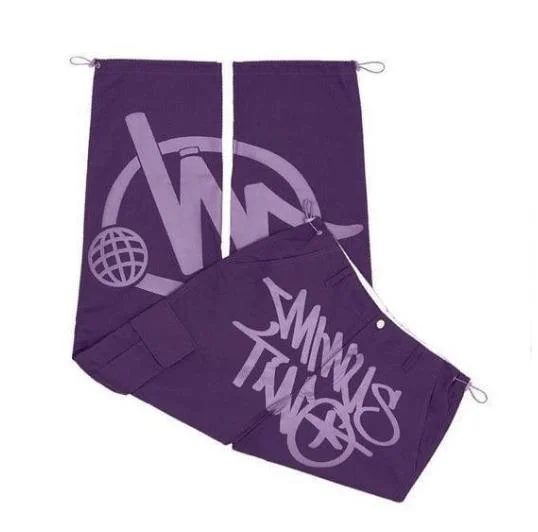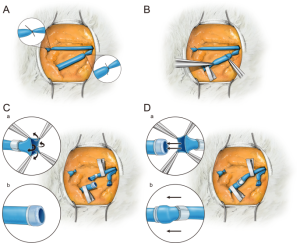Best Practices for Managing Minus Two Cargo
5 min read
Minus Two Purple Cargo
Introduction
Managing Minus Two Cargo can be quite a task, but it’s essential for ensuring the integrity and quality of temperature-sensitive goods. From pharmaceuticals to perishable food items, Minus Two Cargo encompasses a variety of products that require meticulous handling. Proper management not only prevents spoilage and waste but also ensures compliance with stringent regulatory standards. So, how do you navigate this complex landscape? Let’s dive in.
Understanding Minus Two Cargo
Minus Two Cargo refers to goods that must be stored and transported at or around -2°C. These products are typically highly sensitive to temperature fluctuations, making their management a critical aspect of the supply chain.
Characteristics of Minus Two Cargo
These items usually include vaccines, certain pharmaceuticals, biological samples, and some perishable foods. They require a stable environment to maintain their efficacy and safety.
Common Examples
Some common examples include vaccines, blood products, certain seafood, and dairy products. Each of these items has specific temperature requirements that must be adhered to strictly.
Challenges in Managing Minus Two Cargo
Temperature Sensitivity
Minus Two Cargo is highly sensitive to temperature changes. Even a slight deviation can compromise the product’s integrity, leading to significant losses.
Regulatory Compliance
Various international and national regulations govern the handling of temperature-sensitive cargo. Compliance with these regulations is mandatory and can be quite challenging due to their complexity.
Logistics and Handling
Coordinating the logistics and handling of Minus Two Cargo requires precision and expertise. From transportation to storage, every step must be carefully managed.
Temperature Control
Maintaining the correct temperature is paramount in managing Minus Two Cargo.
Importance of Maintaining Correct Temperature
Temperature fluctuations can lead to the degradation of products, making them unsafe for use or consumption. Hence, maintaining the specified temperature is crucial. https://minustwoclothes.com/
Best Practices for Temperature Monitoring
Regular monitoring using calibrated thermometers and sensors is essential. Automated systems can provide real-time data and alerts, ensuring any deviations are quickly addressed.
Equipment and Technology Used
Advanced refrigeration units, temperature-controlled containers, and IoT devices are commonly used to maintain and monitor the required temperature levels.
Regulatory Compliance
Overview of Relevant Regulations
Regulations such as the FDA’s guidelines for pharmaceuticals or the WHO’s standards for vaccine storage outline specific requirements for temperature-sensitive goods.
Documentation and Record-Keeping
Accurate documentation and record-keeping are crucial for compliance. This includes maintaining logs of temperature data, inspection reports, and transportation records.
Training and Certification Requirements
Staff handling Minus Two Cargo should be adequately trained and certified to ensure they understand and comply with all regulatory requirements.
Packaging Solutions
Types of Packaging Materials
Packaging materials must provide adequate insulation to maintain the required temperature. Common materials include polystyrene, polyurethane, and vacuum-insulated panels.
Insulation Techniques
Using thermal blankets, gel packs, and phase change materials can help maintain the desired temperature during transit.
Importance of Proper Labeling
Proper labeling is essential for identifying the contents and handling requirements. This ensures that the cargo is handled appropriately at every stage of the supply chain.
Transportation Best Practices
Choosing the Right Transportation ModeSelecting the appropriate mode of transportation—air, sea, or land—is crucial. Each mode has its own set of advantages and challenges for temperature control.
Coordinating with Logistics Partners
Working closely with logistics partners ensures that everyone involved is aware of the handling requirements and can respond promptly to any issues.
Real-Time Tracking and Monitoring
Implementing real-time tracking and monitoring systems helps in keeping an eye on the cargo throughout its journey, ensuring immediate action in case of any temperature deviations.
Storage Considerations
Ideal Storage Conditions
Minus Two Cargo should be stored in facilities that can maintain the required temperature consistently. This often involves using specialized cold storage units.
Inventory Management
Efficient inventory management systems help in tracking the storage conditions and ensuring that the cargo is used within its shelf life.
Safety Protocols
Safety protocols should be in place to handle emergencies such as power outages or equipment failures. This includes backup power sources and contingency plans.
Risk Management Strategies
Identifying Potential Risks
Understanding the potential risks, such as equipment failures or transportation delays, helps in developing effective mitigation strategies.
Developing Contingency Plans
Having contingency plans in place ensures that any issues can be quickly addressed without compromising the cargo’s integrity.
Insurance Options
Insurance can provide financial protection against losses due to temperature deviations or other unforeseen events.
Technological Innovations
Latest Advancements in Cold Chain Technology
Technological advancements like advanced refrigeration units, automated monitoring systems, and smart packaging solutions are revolutionizing the management of Minus Two Cargo.
Benefits of IoT in Cargo Management
IoT devices provide real-time data and alerts, enabling proactive management and reducing the risk of temperature deviations.
Case Studies
Examining case studies of successful Minus Two Cargo management can provide valuable insights and best practices.
Cost Management
Budgeting for Minus Two Cargo Management
Proper budgeting involves considering all aspects of the supply chain, from packaging and transportation to storage and monitoring.
Cost-Saving Tips
Using energy-efficient equipment, optimizing transportation routes, and leveraging technology can help in reducing costs without compromising on quality.
ROI of Effective Management
Investing in proper management of Minus Two Cargo can result in significant returns by reducing waste, ensuring compliance, and maintaining product quality.
Sustainability Practices
Eco-Friendly Packaging Solutions
Using sustainable packaging materials and techniques can reduce the environmental impact of Minus Two Cargo management.
Reducing Carbon Footprint
Optimizing transportation routes and using energy-efficient equipment helps in minimizing the carbon footprint.
Sustainable Transportation Options
Exploring alternative transportation options such as electric vehicles can contribute to a more sustainable supply chain.
Training and Education
Importance of Staff Training
Well-trained staff are essential for ensuring that all procedures are followed correctly, reducing the risk of errors.
Training Programs and Resources
Investing in comprehensive training programs and providing access to resources helps in keeping the staff updated with the latest best practices.
Continuous Learning and Improvement
Encouraging continuous learning and improvement ensures that the management practices evolve with the changing industry standards.
Customer Communication
Keeping Customers Informed
Transparent communication with customers about the handling and status of their cargo builds trust and confidence.
Handling Customer Complaints and Issues
Promptly addressing any complaints or issues demonstrates a commitment to quality and customer satisfaction.
Building Trust and Transparency
Providing detailed information about the management practices and ensuring transparency helps in building long-term relationships with customers.
Conclusion
Managing Minus Two Cargo requires a comprehensive approach that encompasses temperature control, regulatory compliance, packaging, transportation, storage, and risk management. By following best practices and leveraging technological innovations, businesses can ensure the integrity and quality of their temperature-sensitive goods.




